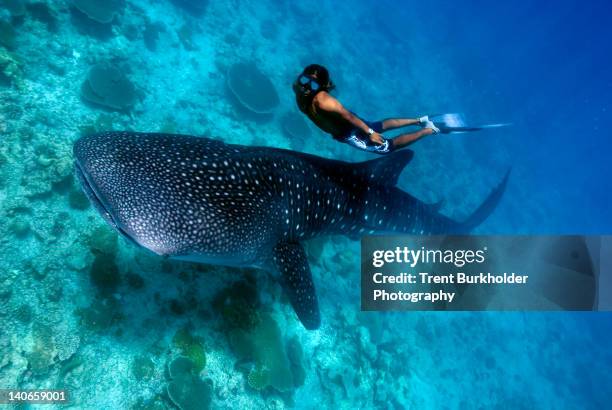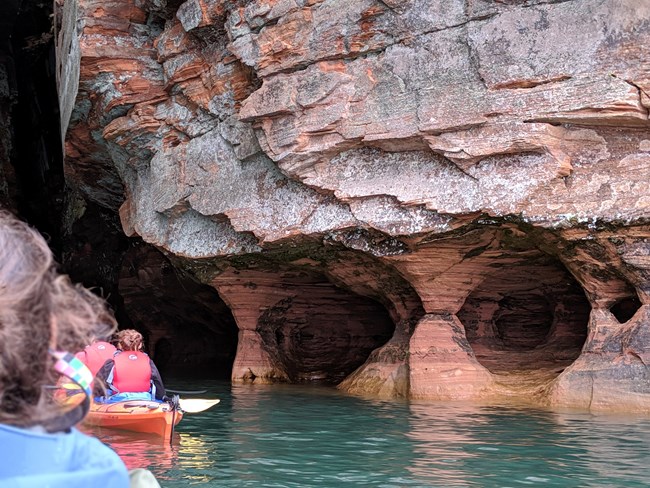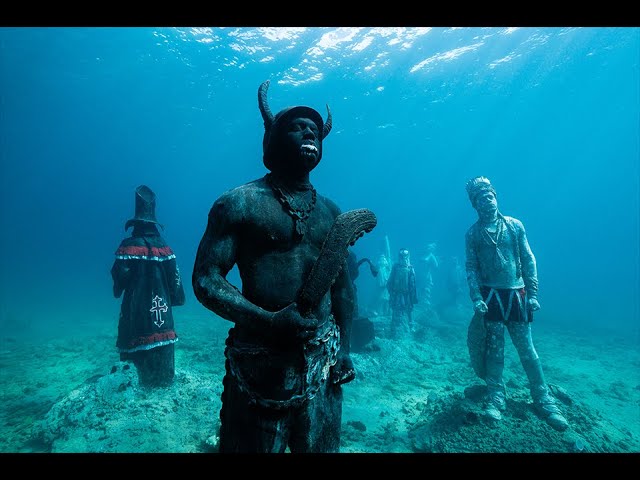Dive Deeper: Unforgettable Underwater Adventures for the Intrepid Photographer

For experience-driven adventurers and underwater photography enthusiasts, the world’s oceans offer a boundless canvas of breathtaking beauty and thrilling challenges. It's not just about seeing; it's about immersing yourself in unique environments, pushing personal limits, and capturing the magic through the lens. This isn't your average sightseeing tour. These are journeys designed to ignite your passion for exploration and foster a deeper understanding of our planet's precious marine ecosystems. Are you ready to dive deeper into some unforgettable underwater adventures?
Section 1: Freediving with Whale Sharks in the Maldives: A Gentle Giant Encounter
The Maldives, a tropical paradise renowned for its pristine beaches and vibrant coral reefs, also plays host to the ocean's gentle giants: whale sharks. Encounters with these magnificent creatures are awe-inspiring, but the opportunity to freedive with them elevates the experience to a whole new level. Freediving, unlike scuba diving, allows for a more intimate and silent interaction, free from the clunky gear and bubbles that can sometimes disrupt the natural environment. It transforms the encounter into a personal test of breath-holding skills and mental fortitude, demanding focus and tranquility in the presence of these colossal animals.
Photography Focus
Capturing the grandeur of whale sharks underwater requires specific techniques. Wide-angle lenses are essential, such as the SeaLife Micro 3.0 or an Olympus TG-6 with a wide-angle lens attachment. These lenses allow you to encompass the sheer size of the whale shark and its surroundings. Shooting in RAW format grants you maximum flexibility during post-processing, allowing you to recover details in shadows and highlights.
When freediving at shallow depths (5-15 meters), utilize natural light to your advantage. Position yourself to capture the dappled sunlight patterns dancing on the whale shark's skin. Shooting upwards towards the surface will help capture stunning sun rays, adding depth and dimension to your images. Remember to keep your movements slow and deliberate to avoid startling the whale shark.
Personal Challenge
Freediving presents unique challenges, both mental and physical. Equalizing pressure in your ears as you descend requires practice and control. Mastering buoyancy is crucial to maintain a comfortable depth and avoid unnecessary movements. Remaining calm and focused in the presence of such large creatures demands mental discipline. Proper certification and training, such as a PADI Freediver course, are essential for safe and enjoyable freediving experiences. It's not just about holding your breath; it's about developing the skills and awareness to interact respectfully with the underwater world.
Conservation Angle
Many tour operators in the Maldives are actively involved in whale shark research and conservation. The Maldives Whale Shark Research Programme (MWSRP) is a fantastic example. They often incorporate citizen science into their dives, encouraging participants to photograph whale sharks. These photographs are then used to contribute to photo-identification databases, helping researchers track whale shark populations, movements, and growth patterns. By sharing your whale shark photos on Instagram using #MaldivesWhaleSharkProject, you can contribute to vital research efforts and raise awareness about these amazing creatures.
Section 2: Sea Kayaking Through Apostle Islands Ice Caves: A Winter Wonderland Endurance Test
Venture to the Apostle Islands National Lakeshore in Wisconsin, and you'll discover a winter wonderland unlike any other. When Lake Superior freezes, its sandstone cliffs transform into intricate ice caves, creating a breathtaking spectacle of natural artistry. Sea kayaking through these caves presents a unique challenge, demanding cold-water endurance and skillful maneuvering. The experience is fleeting, as the caves form only under specific ice and weather conditions, making each visit a truly special event.

Photography Focus
Photography within the Apostle Islands ice caves presents several challenges. Low-light conditions are prevalent, requiring specialized equipment and techniques. A GoPro with a waterproof housing is ideal for capturing the interior of the caves, and can be easily mounted to your kayak. Using HDR mode can help balance the contrasting light and shadow within the caves, revealing details in both the brightest and darkest areas. Consider using external underwater strobes and lights to illuminate the ice formations and enhance their colors. Waterproofing and protecting your equipment from the cold is paramount. Shooting with a slow shutter speed can also capture the movement of water and ice, adding a dynamic element to your images.
Personal Challenge
Kayaking in freezing temperatures is physically demanding. Layered clothing and a dry suit are essential to protect against the cold. Mental resilience is just as important, as you'll need to overcome the discomfort and potential risks associated with the cold. Hypothermia is a real concern, so proper gear and guidance from experienced tour operators are crucial. Navigating through narrow passages and around delicate ice formations requires focus and control. This is an adventure that tests your physical and mental limits, rewarding you with unparalleled beauty.
Conservation Angle
Many tour operators, such as Lost Creek Adventures, prioritize responsible tourism and environmental stewardship. They adhere to Leave No Trace principles, minimizing their impact on the fragile ecosystem. These operators also educate kayakers about the fragility of the ice formations and the importance of respecting the natural environment. Avoid touching the ice formations to prevent damage and maintain the pristine beauty of the caves for future visitors. By choosing responsible tour operators and following their guidelines, you can help protect this unique winter wonderland.
Section 3: Exploring Underwater Art in Grenada's Molinere Bay: A Buoyancy Control Masterclass
Grenada's Molinere Bay Underwater Sculpture Park offers a unique blend of art and marine conservation. Created by sculptor Jason deCaires Taylor, the sculptures serve as artificial reefs, providing a canvas for coral growth and a haven for marine life. Exploring this underwater art gallery is an opportunity to hone your buoyancy control skills while capturing stunning underwater photographs. It's a dive experience that combines artistic appreciation with environmental awareness.

Photography Focus
Photographing the underwater sculptures requires a different approach than capturing large marine life. Macro lenses, such as a 60mm or 105mm, are ideal for capturing the intricate details of the coral growth on the sculptures. External strobes are essential for bringing out the colors and textures of the marine life, which tend to fade at depth. Neutral buoyancy is paramount to avoid disturbing the sediment and damaging the delicate coral.
Using a red filter can help correct the color balance at depth, restoring the vibrant hues that are lost underwater. Experiment with different angles and perspectives to capture the sculptures in unique and artistic ways. Pay attention to the interplay of light and shadow, and look for interesting compositions that highlight the relationship between art and nature.
Personal Challenge
Navigating the sculpture park safely and effectively requires technical diving skills. Precise buoyancy control is essential to avoid contact with the fragile sculptures. Kicking up sediment can reduce visibility and harm the coral, so maintaining a stable and controlled position in the water is crucial. A Peak Performance Buoyancy course can be invaluable in preparing you for this dive. It's a dive that demands skill, precision, and respect for the underwater environment.
Conservation Angle
The underwater sculptures provide artificial reefs, encouraging coral growth and supporting marine biodiversity. The Grenada Marine Protected Areas actively manage the park, ensuring its long-term preservation. Responsible diving practices are essential for protecting this unique ecosystem. Support local conservation efforts by purchasing a dive permit and adhering to responsible diving guidelines. By diving responsibly, you contribute to the park's long-term health and ensure that future generations can enjoy this underwater art gallery.
Conclusion
These three adventures – freediving with whale sharks in the Maldives, sea kayaking through Apostle Islands ice caves, and exploring Grenada's Underwater Sculpture Park – offer a unique blend of personal challenge, stunning underwater photography opportunities, and contributions to marine conservation. Each journey pushes your limits, ignites your creativity, and deepens your appreciation for the underwater world. Plan your own underwater adventures and share your experiences using #VistaLocationUnderwaterAdventures.
Packing List for Underwater Photography:
- Underwater camera housing
- Wide-angle lens/macro lens
- External strobes
- Dive lights
- Waterproof bag
- Red filter
- Buoyancy compensator
- Wetsuit/drysuit
- Dive computer